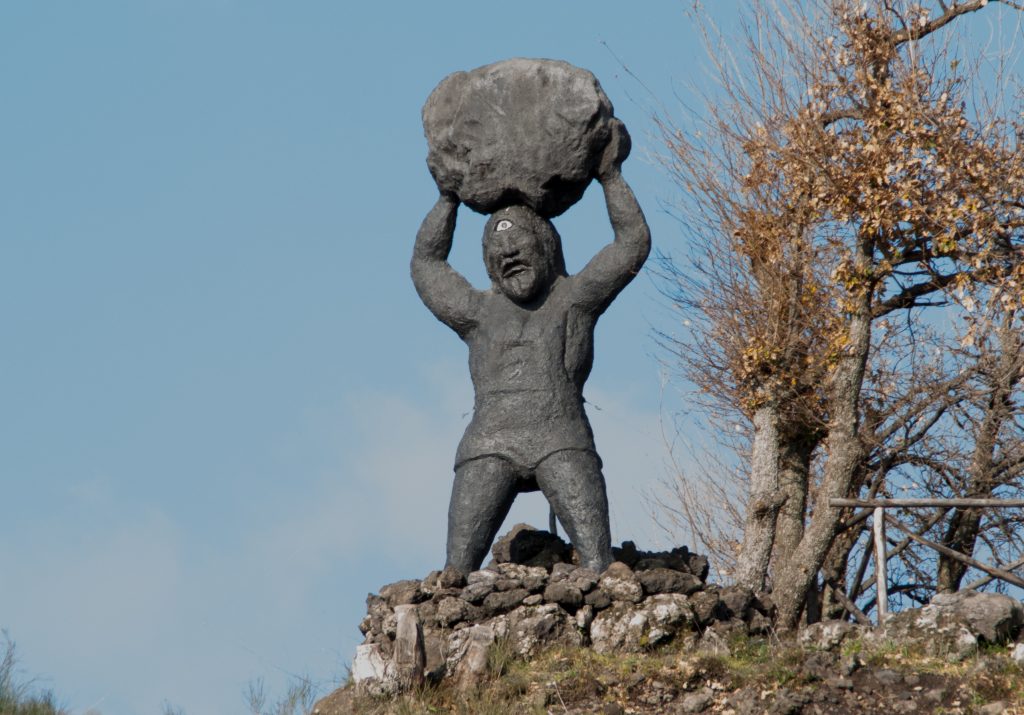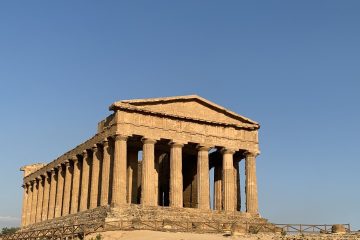Mythology of Sicily & Mount Etna
Tales of Ancient Gods and Fiery Eruptions
Mount Etna is one of the most famous volcanoes in the world. It has erupted numerous times throughout history, leaving behind a trail of destruction and wonder. But beyond its awe-inspiring natural beauty lies a rich mythology, shaped by the beliefs and traditions of the ancient civilizations that lived in the region.
In this blog post, we’ll delve into the mythology of Mount Etna and discover the fascinating tales of gods, goddesses, and fiery eruptions that have been passed down through generations.

Encelado
Encelado was a giant in Greek mythology, one of the most powerful giants, known for his immense strength and fierce temper. The myth of Encelado goes back to the Titanomachy, the great battle between the gods and the Titans. Encelado was one of the Titans who fought against the gods, led by Zeus, for control of the universe. Encelado was known for his ferocity in battle, and he fought bravely against the gods, wielding massive rocks as weapons. However, despite his strength, he was eventually defeated by the gods, who struck him with a bolt of lightning, causing him to fall to the earth.
When Encelado fell, his body became buried beneath the earth, and his blood created the famous volcano Mount Etna in Sicily. Encelado still lies beneath the mountain, struggling to free himself from his rocky prison.
The Wrath of Hephaestus
Another mythological tale associated with Mount Etna is the wrath of Hephaestus, the god of fire and blacksmiths. In this story, Hephaestus was angry with his wife Aphrodite and threw her out of Mount Olympus. She landed on Mount Etna, where she was found by the giant Enceladus. As a result of this, Hephaestus sent his fiery forges to the mountain to punish Enceladus, causing the volcano to erupt.
The Love Story of Polyphemus and Galatea
In yet another mythological tale, the famous one-eyed giant Polyphemus fell in love with the sea nymph Galatea, who was in love with the shepherd Acis. Polyphemus, jealous of Acis, hurled a massive rock at him, killing him instantly. In grief, Galatea transformed Acis into a river, which flowed down Mount Etna.
The Role of Mount Etna in Ancient Greek Beliefs
In addition to these mythological tales, Mount Etna also played an important role in ancient Greek beliefs. The volcano was seen as a symbol of both destruction and creation, with eruptions believed to be a sign of the anger of the gods. The people of ancient Greece also believed that the volcano was the gateway to the underworld, and that it was where the god of the underworld, Hades, resided.
Persephone
The myth of Proserpina, also known as Persephone, is a well-known Greek myth about the goddess of spring and the underworld. Proserpina was the daughter of Ceres, the goddess of agriculture and harvest, and Jupiter, the king of the gods.
One day, while Proserpina was picking flowers in a field, Pluto, the god of the underworld, saw her and fell in love with her beauty. He then kidnapped her and took her to the underworld to become his wife.
Ceres was devastated by her daughter’s disappearance and searched the entire earth for her, but to no avail. Finally, she went to Jupiter, pleading with him to return her daughter. Jupiter agreed to help, but unfortunately, he could not break the law of the underworld, which decreed that anyone who ate or drank anything while in the underworld must stay there forever.
It so happened that Proserpina had eaten a few pomegranate seeds while in the underworld, sealing her fate. However, a compromise was made, and it was decided that Proserpina would spend half of the year with Pluto in the underworld as his queen and the other half with her mother in the world above.
This is how the myth of Proserpina explains the changing of the seasons, as Ceres, in her joy at being reunited with her daughter in the spring, causes the earth to bloom and grow, while her sadness at Proserpina’s departure in the fall causes the plants to wither and die.
The story of Proserpina has been retold and interpreted in many ways over the years, with various authors and artists giving their own unique spin on the classic tale. Nonetheless, the myth remains one of the most enduring and beloved stories of Greek mythology.

